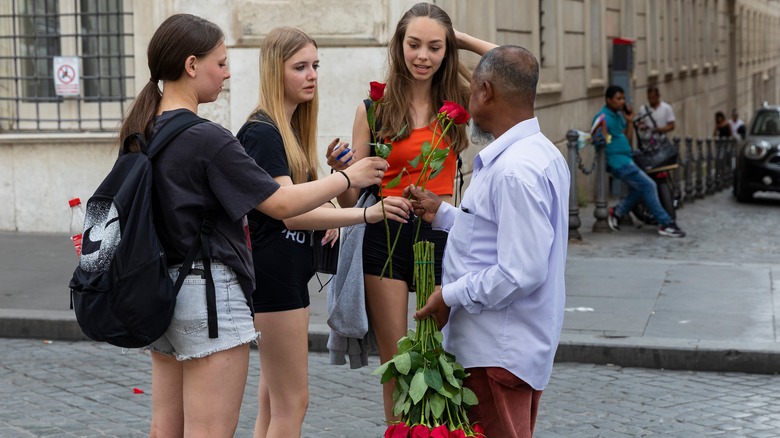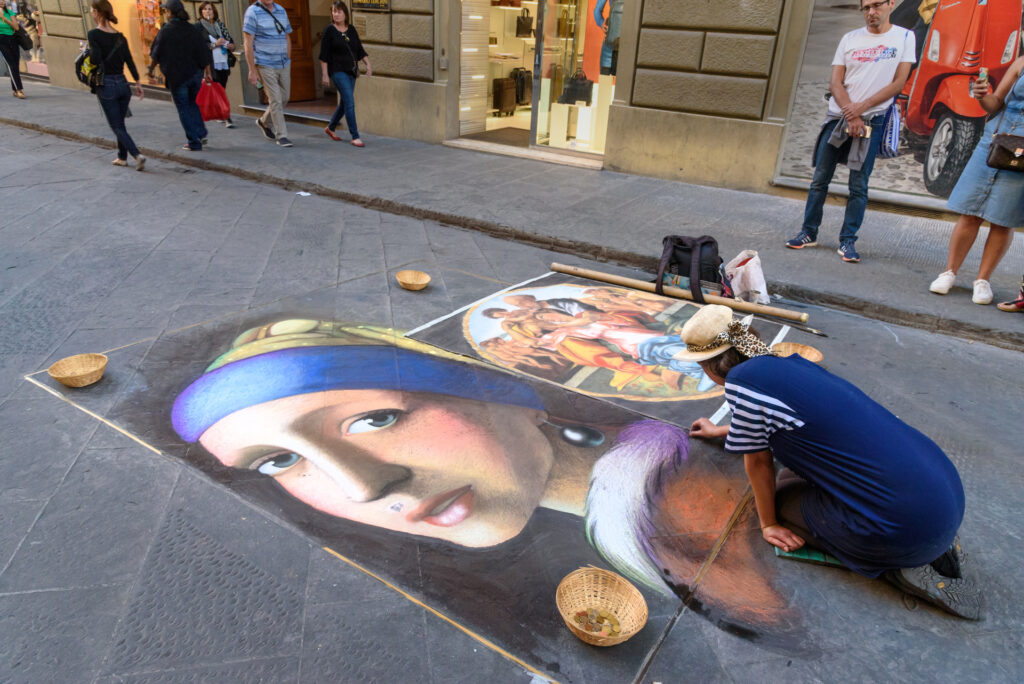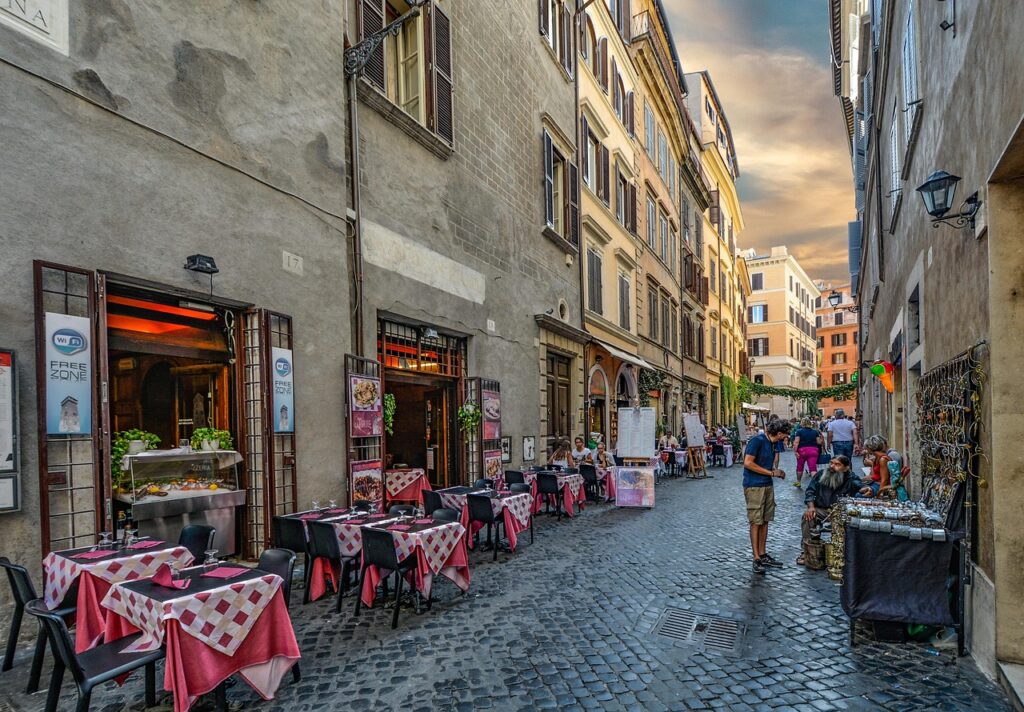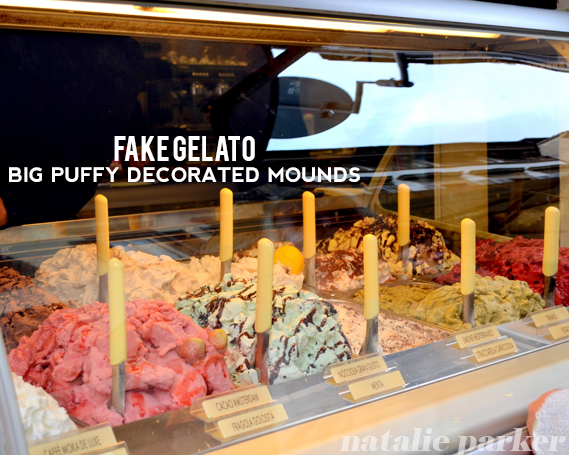You are standing before the Colosseum in Rome. The sun is warm on your face. You are living your best Italian dream. Just imagine.
Italy is a magical place. It welcomes over 60 million tourists every year. But large crowds can attract unwanted attention. Scammers often target travelers who are distracted or unfamiliar with local customs.
But don’t let this worry you. Italy is a very safe country. Violent crime is rare. A little knowledge is your best defense. This guide will arm you with everything you need to know.
Here’s how you can spot and sidestep the most common tourist scams in Italy.
Contents
Common Street-Level Tourist Scams in Italy
1. The “Free Gift” Scam

A friendly person approaches you in a busy square. They offer you a “free gift.” It might be a friendship bracelet or a rose. They are very charming. They might tie the bracelet on your wrist before you can say no. Sometimes they toss it to you, and you catch it by instinct.
Once you have the item, their friendly attitude vanishes. They demand money for the “gift”. They might share a sad story to guilt you into paying.
This is one of the most common tourist scams. It also serves as a distraction. While you are arguing, an accomplice may try to pick your pocket.
How to avoid it: Do not engage with them at all. Avoid eye contact and keep walking. A firm “No, grazie” works. If they put a bracelet on you, take it off, drop it, and walk away.
2. The Fake Petition Scam
You will see groups of people with clipboards. They often pretend to be from a charity. They may claim to be deaf or collecting for a drug rehab center. They will ask you to sign their petition.
The clipboard is a tool for distraction. They hold it up high, blocking your view of your bag or pockets. While you are busy signing, an accomplice steals your wallet. Afterward, they will pressure you to make a donation.
How to avoid it: Never stop to sign anything from a stranger on the street. Just shake your head, say no, and continue on your way.
Also Read: 12 Fascinating Facts About Italy You Probably Didn’t Know
3. The Dropped Gold Ring Scam
This one is clever. A person will pretend to find a gold ring on the ground near you. They will ask if you dropped it. When you say no, they will inspect it. They point to a fake mark “proving” it is real gold.
Then, they offer to sell you the “valuable” ring for a great price. They might say they need money for food. The ring is, of course, a worthless piece of brass.
How to avoid it: Simply say, “It’s not mine,” and walk away. Do not get into a conversation about its value.
4. The Damaged Art Scam (Florence)

In Florence, be careful where you walk in crowded squares. Scammers place cheap paintings on the pavement. They put them where you are likely to step on them. If you do, they will accuse you of damaging their art. They will then demand you pay for the “ruined” piece.
How to avoid it: Watch your step in busy areas near landmarks. If you are confronted, stand your ground. Refuse to pay and say you will call the police (polizia). Real artists do not leave their work on the sidewalk.
Also See: 10 Things No One Tells You About Living in Italy — And Every Foreigner Finds Out Too Late
5. The Tricky Taxi Ride
Taxi scams are common worldwide, and Italy is no exception. A driver might claim the meter is broken. He will then offer a flat rate. This rate will be much higher than the actual fare.
Another trick is the “broken” credit card machine. This is often a way to get cash and avoid paying taxes.
Also, watch out for the cash-swap. You pay with a 50 euro note. The driver quickly swaps it for a 10 euro note. He then insists you did not pay enough.
How to avoid it: Only use official white taxis from a designated taxi stand. Insist the driver uses the meter (tassametro). Confirm they take cards before you get in. Or, use a ride-hailing app like FreeNow.
6. The “Helpful” Local at Ticket Machines

You are at a train station trying to buy a ticket. The machine can be confusing. A very “helpful” person appears and offers to assist you. After they help, they will ask for a tip for their service.
In a worse version, their “help” is a distraction. An accomplice is picking your pocket while you focus on the screen. Being aware of these tourist scams in Italy is your best defense.
How to avoid it: Firmly but politely decline any unsolicited help. If you need assistance, find a uniformed staff member.
Also Read: I’ve Lived in Italy for Six Years — Here Are 10 Unspoken Rules To Follow When You Visit
Dining Deceptions and Food Frauds
7. The Tourist-Trap Restaurant

Avoid restaurants with a host outside trying to lure you in. Other red flags include huge menus with pictures. Menus in six languages are also a bad sign. These places often serve overpriced, frozen food.
How to avoid it: Walk a few streets away from the main tourist attractions. Look for smaller places with short, seasonal menus. If you see locals eating there, it is usually a good sign.
8. The Tipping Pressure Scam
Here is a key tip: tipping is not customary in Italy. A service charge (servizio) or cover charge (coperto) is often included in the bill. This should be listed on the menu.
However, some waiters in touristy areas will pressure foreigners for a tip. They know that Americans, for example, are used to tipping generously.
How to avoid it: You are not obligated to tip. If the service was amazing, you can round up the bill. But if a waiter demands a tip, you can firmly refuse.
9. The Fake Gelato

Not all gelato is created equal. Avoid shops with gelato piled high in fluffy mountains. Bright, neon colors are another warning sign. This gelato is often mass-produced. It is full of air and artificial ingredients.
How to avoid it: Look for gelato with natural, subdued colors. Pistachio should be a pale brownish-green, not bright green. The best gelato is often stored in covered metal tins. Look for a sign that says gelato artigianale.
Buyer Beware: Counterfeit Craftsmanship
10. The Florence Leather Scam
Florence is famous for its beautiful leather goods. Unfortunately, the markets are also full of fakes. Be aware that it is illegal for tourists to buy counterfeit products in Italy. You could face a large fine if caught.
How to avoid it: For a big purchase, avoid the street markets. Visit the Leather School (Scuola del Cuoio) or a reputable boutique. Real leather has a distinct, natural smell; fakes smell like chemicals. Quality items have tight, even stitching and a higher price tag.
11. The Murano Glass Scam (Venice)
In Venice, you will see shops selling beautiful Murano glass. But many sell cheap, mass-produced fakes from other countries.
How to avoid it: Authentic Murano glass is a luxury item; a very low price is a red flag. Each handmade piece is unique. Look for small imperfections like tiny bubbles. Many artists sign their work. Ask the seller for a certificate of origin.
Checkout: Italy Has Over 60 UNESCO World Heritage Sites – These Are 15 You Absolutely Should Not Miss
City-Specific Scams to Watch For
12. The Gladiator Photo Scam (Rome)
Near the Colosseum, men dressed as Roman gladiators will offer to take a photo with you. They seem like part of the attraction. After you snap the picture, they demand a lot of money. They can become very aggressive if you refuse to pay. This practice is illegal, but it continues.
How to avoid it: Simply do not take a photo with them. Smile, shake your head, and walk on by.
13. The Pigeon Feed Scam (Milan)
In Milan’s main square, Piazza del Duomo, men will offer you “free” birdseed. They might even place it directly into your hand. Suddenly, you will be covered in pigeons. It makes for a great photo.
After the picture, the man will demand payment. They can be tricky, claiming the price was per photo, not per handful of seed.
How to avoid it: Do not accept anything from these men. Keep your hands to yourself and keep walking.
High-Stakes Deception
14. The Fake Police Scam

This is one of the more serious and intimidating tourist scams in Italy. Scammers dressed in plain clothes will approach you. They will flash a fake police badge. They might say they are checking for counterfeit money. They will ask to see your wallet and passport.
While they “inspect” your cash, they will expertly steal some of it. You might not even notice until later.
How to avoid it: Never hand over your wallet or cash. You can offer to show your ID. Insist that any inspection happens at a police station (questura). This will usually scare them off.
15. The ATM Skimmer/Helper Scam
Criminals can attach skimming devices to ATMs. These devices steal your card information and PIN. These are most common on standalone ATMs in tourist areas.
Another version involves a “helper.” They might say an ATM is broken and lead you to a compromised one. Or they will watch over your shoulder to steal your PIN. These are some of the most frustrating tourist scams in Italy.
How to avoid it: Use ATMs located inside a bank or post office. They are checked more often. Always cover the keypad with your hand when you enter your PIN.
Related: 10 Rookie Mistakes Tourists Make in Italy (And how to Avoid Them)
Final Thoughts
Italy is a stunningly beautiful and welcoming country. Millions of people have incredible, trouble-free vacations here every year.
But it’s always good to know about the top tourist scams in Italy. This knowledge is your power. It allows you to travel with confidence, not fear.
If you do get scammed, report it to the local police. Cancel any compromised credit cards immediately. But with these tips, you are well-prepared to handle whatever comes your way.
Go enjoy your trip and make wonderful memories. Buon viaggio!